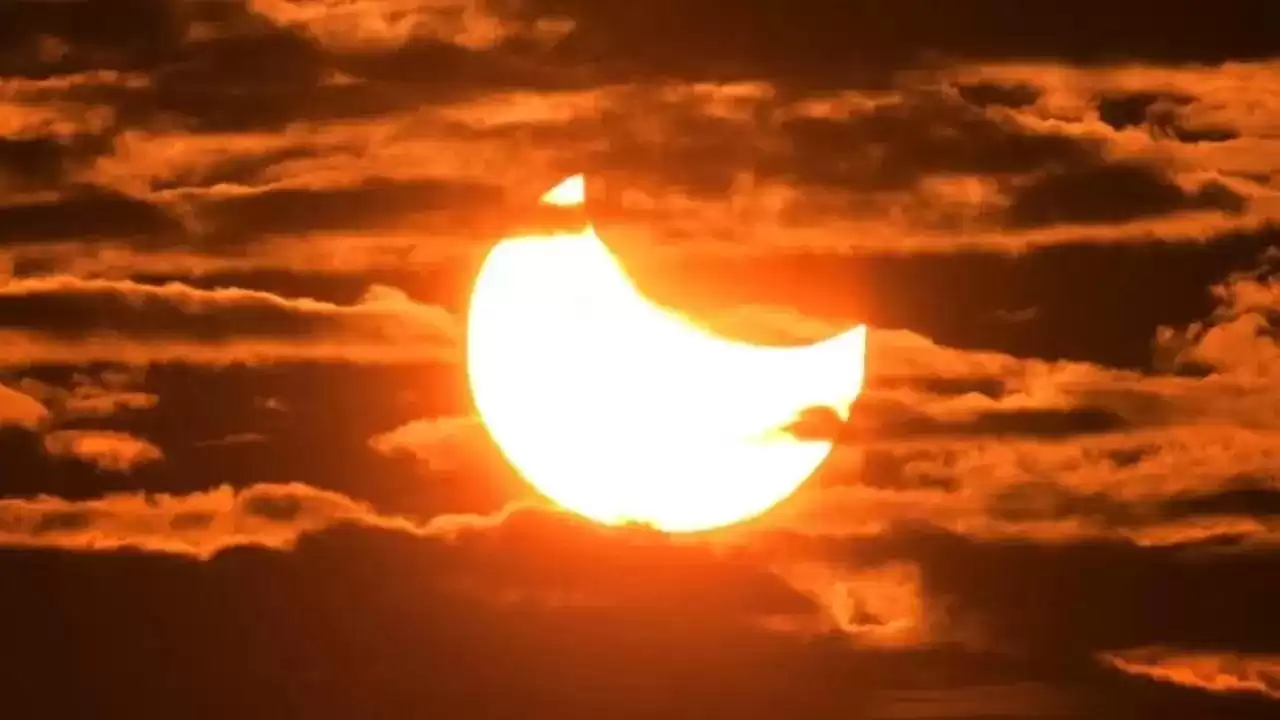Solar Eclipse 2023: Types of Solar Eclipses Explained
"Watch the 'ring of fire' solar eclipse in 2023 on NASA's YouTube channel! Remember to protect your eyes during this awe-inspiring celestial event."
A solar eclipse is a mesmerizing natural phenomenon that occurs when the moon passes between the Earth and the Sun, causing a temporary blockage of the Sun's light and casting a shadow on a portion of the Earth's surface. This extraordinary event can only take place during a new moon when the Sun, Moon, and Earth align perfectly in a straight line.
There are different types of solar eclipses that vary in their level of visibility and impact. One such type is the total solar eclipse, where the Moon completely covers the Sun, revealing the Sun's outer atmosphere, also known as the solar corona. This creates a moment of darkness during the day, referred to as the "path of totality," within the eclipse's designated path.
Another type is the partial solar eclipse, where the Moon partially obstructs the Sun, resulting in a partial shadow on the Earth and a partial darkening of the sky. This type of eclipse does not completely block the Sun, allowing some sunlight to filter through.
Lastly, we have the annular solar eclipse, which occurs when the Moon covers the central part of the Sun, leaving a ring or "annulus" of the Sun's outer edges visible. This happens because the Moon is farther from Earth in its elliptical orbit, making it appear slightly smaller in the sky.
Solar eclipses are captivating events that attract astronomers and eclipse enthusiasts worldwide. However, it is crucial to observe them with proper eye protection to avoid any damage to our eyes. The path of totality during a total solar eclipse is particularly sought after, as it offers a unique opportunity to witness this awe-inspiring celestial spectacle.
In October 2023, there will be a "ring of fire" solar eclipse, but unfortunately, it will not be visible in India. However, people in India and around the world can still experience this phenomenon through the official NASA broadcast on their YouTube channel. The live streaming will commence at 4:30 pm on October 14, 2023, allowing viewers to witness this extraordinary event from the comfort of their homes.
When it comes to safety precautions, it is crucial to remember that during an annular solar eclipse, the Sun is never completely blocked by the Moon. Therefore, it is never safe to directly gaze at the Sun without appropriate eye protection. NASA advises using eclipse glasses, which are thousands of times darker than regular glasses, to safeguard our eyes during the eclipse.
Furthermore, it is essential to avoid looking at the Sun through cameras, telescopes, binoculars, or any other optical devices during the eclipse. Doing so not only risks damaging the filters but also poses a significant threat to our eyes.
In conclusion, solar eclipses are extraordinary celestial events that captivate people's attention worldwide. Understanding the different types of solar eclipses and taking necessary precautions to protect our eyes during these events is essential. Whether observing a total, partial, or annular solar eclipse, the beauty and wonder of these phenomena are sure to leave a lasting impression on anyone fortunate enough to witness them.












Comments on Solar Eclipse 2023: Types of Solar Eclipses Explained